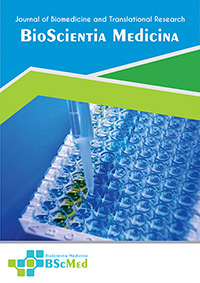Main Article Content
Abstract
Background: Percutaneous coronary intervention (PCI) in patients with complex coronary artery disease is associated with a higher risk of adverse events, including in-stent restenosis (ISR). Intravascular imaging, using either intravascular ultrasound (IVUS) or optical coherence tomography (OCT), has been proposed to optimize stent implantation and improve outcomes, but its definitive role requires comprehensive evidence synthesis.
Methods: We conducted a systematic review and meta-analysis of randomized controlled trials (RCTs). Major electronic databases (PubMed, EMBASE, Cochrane CENTRAL) were searched from January 2014 to May 2025 for RCTs comparing intravascular imaging-guided PCI with angiography-guided PCI in patients undergoing complex procedures. The primary efficacy endpoint was Major Adverse Cardiovascular Events (MACE), a composite of cardiac death, target-vessel myocardial infarction, and clinically-driven target lesion revascularization. The key secondary endpoint was angiographic ISR. A random-effects model was used to calculate pooled Risk Ratios (RRs) and 95% Confidence Intervals (CIs).
Results: Seven RCTs, enrolling a total of 9,150 patients, met the inclusion criteria. The median follow-up was 24 months. Intravascular imaging guidance was associated with a significant reduction in the risk of MACE (RR: 0.66; 95% CI: 0.55-0.79; p<0.0001) compared to angiography guidance, with moderate heterogeneity (I²=52%). The risk of angiographic ISR was also significantly lower in the imaging-guided group (RR: 0.49; 95% CI: 0.38-0.63; p<0.0001). Furthermore, imaging guidance led to a significant reduction in cardiac death (RR: 0.55; 95% CI: 0.38-0.80) and clinically-driven target lesion revascularization (RR: 0.54; 95% CI: 0.42-0.69).
Conclusion: This meta-analysis provides definitive evidence that the use of intravascular imaging (IVUS or OCT) to guide complex PCI significantly reduces the incidence of long-term major adverse cardiovascular events and in-stent restenosis. These findings support the routine adoption of intravascular imaging as the standard of care to optimize outcomes in this high-risk patient population.
Keywords
Article Details
As our aim is to disseminate original research article, hence the publishing right is a necessary one. The publishing right is needed in order to reach the agreement between the author and publisher. As the journal is fully open access, the authors will sign an exclusive license agreement.
The authors have the right to:
- Share their article in the same ways permitted to third parties under the relevant user license.
- Retain copyright, patent, trademark and other intellectual property rights including research data.
- Proper attribution and credit for the published work.
For the open access article, the publisher is granted to the following right.
- The non-exclusive right to publish the article and grant right to others.
- For the published article, the publisher applied for the Creative Commons Attribution-NonCommercial-ShareAlike 4.0 International License.





